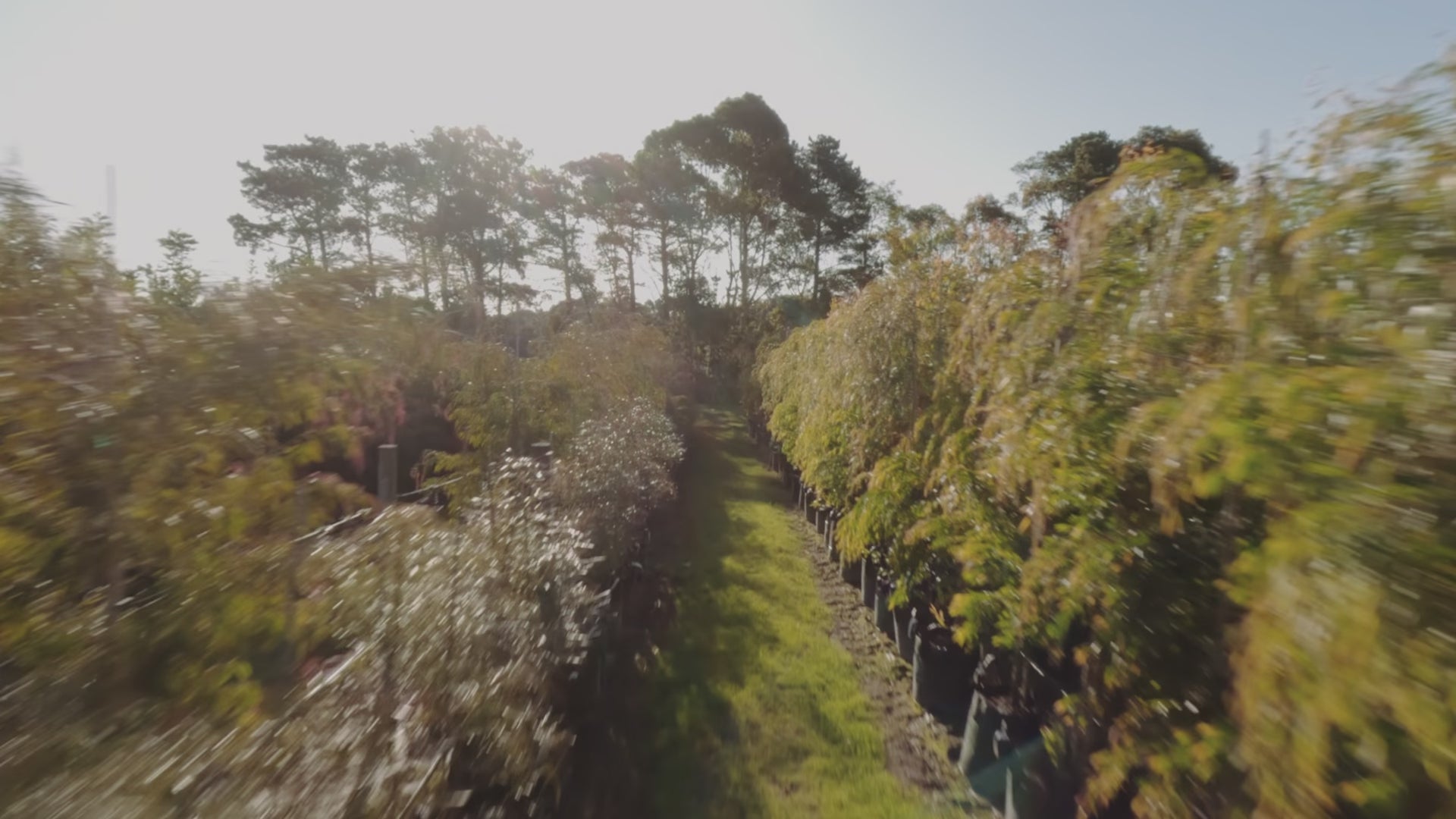Murraya paniculata - Orange Jasmine
Murraya paniculata - Orange Jasmine
Couldn't load pickup availability
Current Stock Height Guides
Current Stock Height Guides
Trade Customers
Trade Customers
We supply advanced trees to landscapers, developers, architects, and councils Australia-wide. Trade clients receive fast quotes, expert advice, and access to premium stock with reliable freight.
Share this product
About Murraya paniculata - Orange Jasmine
Murraya paniculata, commonly known as Orange Jasmine, is a popular evergreen shrub valued for its glossy dark green leaves and clusters of fragrant white flowers. Growing 2–4 meters tall and 1.5–3 meters wide, it forms a compact, dense habit ideal for hedging, screening, or as a feature shrub.
From spring to summer, its citrus-scented flowers fill the air, followed by small red berries that add seasonal interest. Tolerant of full sun to part shade, this shrub thrives in a variety of soils, is moderately drought-tolerant once established, and requires low maintenance.
Perfect for fragrant gardens, privacy screens, or ornamental borders, Murraya paniculata brings year-round greenery and delightful scent to landscapes. Regular watering during dry spells and pruning after flowering help maintain its shape and vitality.
Key Information to Know

Evergreen / Deciduous
Murraya paniculata - Orange Jasmine is an Evergreen (foliage year round) Tree

Mature Height & Width
Mature Height: 2m - 4m Approximately (can be kept smaller by pruning)
Mature Width: 1.5 – 3 m
Murraya paniculata - Orange Jasmine is expected to grow Approx. 30 – 60 cm per year.

Frost Tolerance
Is Murraya paniculata - Orange Jasmine frost tolerant?
Murraya paniculata - Orange Jasmine is Frost Sensitive – May suffer damage from frost, best in frost-free or protected spots.

Flowering Information
Murraya paniculata produces clusters of pure white, waxy, star-shaped flowers from spring through autumn, often blooming repeatedly in warm weather. The blossoms are intensely fragrant—reminiscent of orange blossom—and create a fresh, uplifting seasonal display against the glossy green foliage.

Native Information
Is Murraya paniculata - Orange Jasmine an Australian Native? No
Murraya paniculata - Orange Jasmine is Native to South and Southeast Asia, extending to northern Australia, where it grows naturally in tropical and subtropical regions.

Wildlife Value
Its sweetly scented, nectar-rich flowers attract bees, butterflies and night-flying moths, while the dense evergreen foliage provides excellent cover and nesting habitat for small birds. The small red berries that follow are eaten by certain bird species, helping to support a healthy garden ecosystem.

Sunlight Information
Murraya paniculata - Orange Jasmine will thrive best in:

Preffered Soil
Murraya paniculata performs best in well-drained loam or sandy loam soils and prefers slightly acidic to neutral conditions. It may struggle in heavy clay or poorly drained ground unless improved with organic matter and coarse material to increase drainage. Keep soil evenly moist during establishment, then maintain deep, occasional watering as the plant matures to support healthy evergreen growth, ongoing flowering cycles and overall resilience.
Botanical Information

Botanical Information
Botanical Information
Common Name: Orange Jasmine / Mock Orange
Genus: Murraya
Botanical Species: paniculata
Family: Rutaceae
Botanical Name: Murraya paniculata
Landscape Uses
Landscape Uses
Murraya paniculata - Orange Jasmine works in an:
Planting, Spacing & Care
Planting, Spacing & Care
-
-
-
-
Murraya paniculata - Orange Jasmine is expected to grow Approx. 30 – 60 cm per year.
Root Ball Dimensions (Width × Depth) For Planting
Root Ball Dimensions (Width × Depth) For Planting
Use this as a reference when digging your planting hole. We recommend digging at least 10% wider than the dimensions below to encourage strong root development.
- 30cm Pot: 33cm (W) × 30cm (D)
- 40cm/45L Pot: 44cm (W) × 41.5cm (D)
- 50cm Pot / 70L Pot: 55cm (W) × 41.8cm (D)
- 100L Bag: 50.6cm (W) × 52.8cm (D)
- 150L Bag: 66cm (W) × 55cm (D)
- 200L Bag: 71.5cm (W) × 60.5cm (D)
- 300L Bag: 88cm (W) × 63.8cm (D)
- 400L Bag: 99cm (W) × 66cm (D)
- 500L Bag: 122cm (W) × 66cm (D)
- 750L Bag: 134cm (W) × 69cm (D)
- 1000L Bag: 146.3cm (W) × 71.5cm (D)
- 2000L Bag: 176cm (W) × 82.5cm (D)
Ideal Conditions
Ideal Conditions
Thrives in
Frost Tolerance
Frost Sensitive – May suffer damage from frost, best in frost-free or protected spots.
Drought Tolerance
As a young plant it requires regular watering, and once established Orange Jasmine offers moderate drought tolerance. It performs best in warm, sheltered sites and benefits from deep, occasional watering during extended dry periods to maintain dense foliage, steady growth and repeat flowering.
Flowering Information
Flowering Information
Does Murraya paniculata - Orange Jasmine flower?
Flowering Period:
Flower Type:
Flower Colour:
White
Murraya paniculata produces clusters of pure white, waxy, star-shaped flowers from spring through autumn, often blooming repeatedly in warm weather. The blossoms are intensely fragrant—reminiscent of orange blossom—and create a fresh, uplifting seasonal display against the glossy green foliage.
Frequently Asked Questions
Frequently Asked Questions

We have been featured in




















